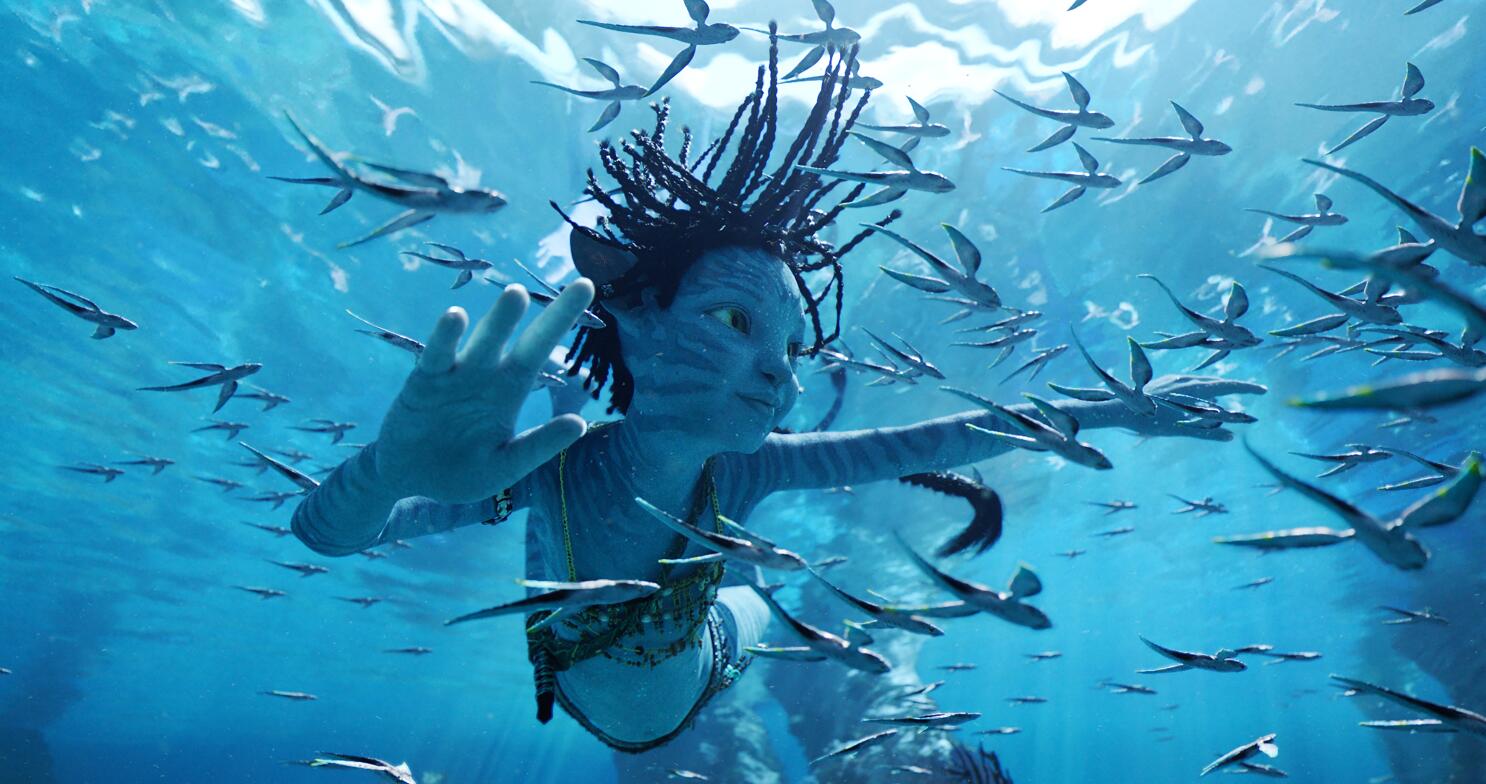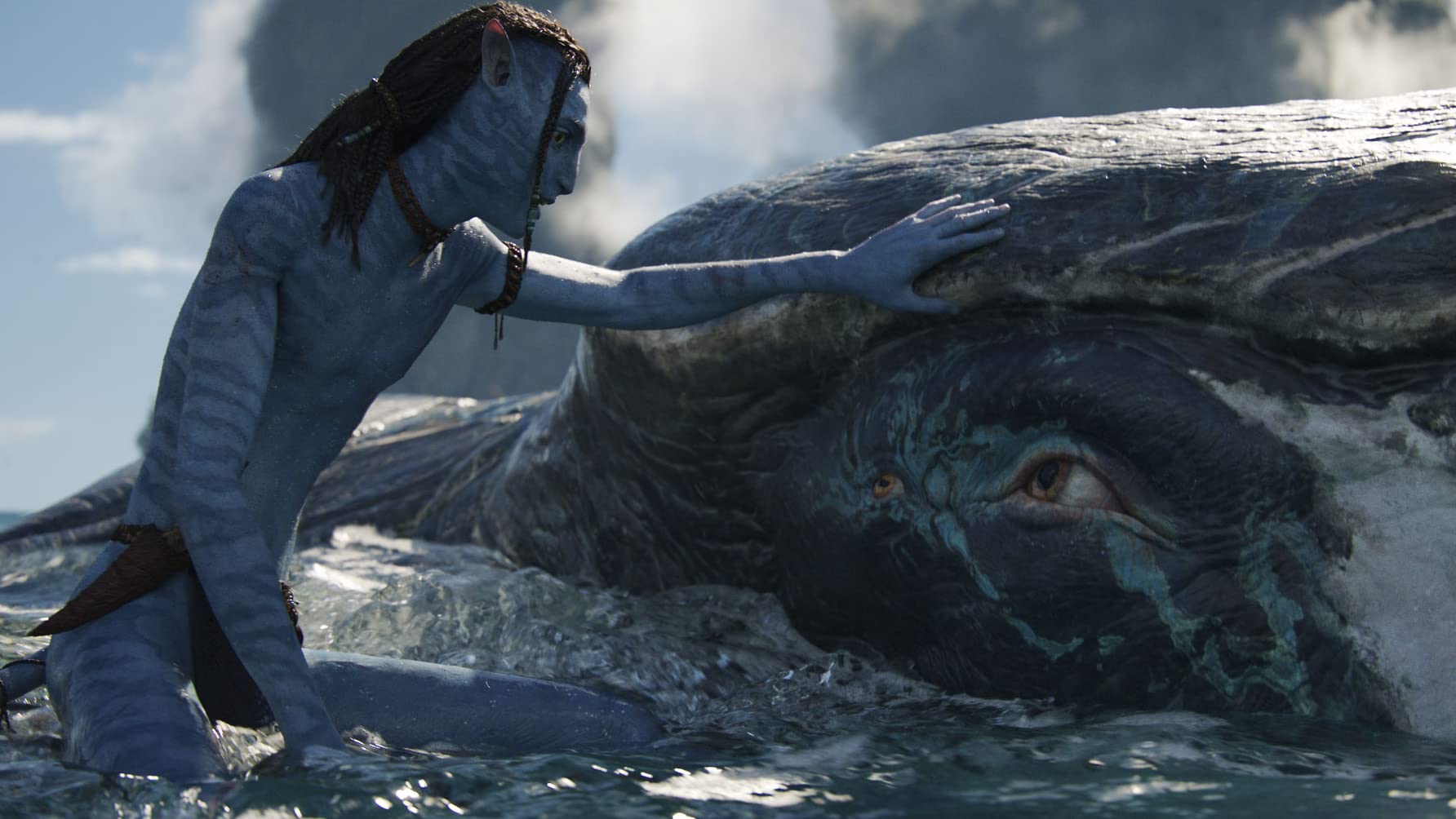Avatar: The Way of Water (2022)

A Visual Masterpiece: A Review of Avatar: The Way of Water (2022)

James Cameron’s long-awaited sequel to Avatar (2009), Avatar: The Way of Water (2022), is an ambitious cinematic experience that builds on the foundation of its predecessor while exploring new thematic and visual depths. With a return to Pandora and the introduction of breathtaking underwater worlds, the film solidifies Cameron’s mastery of immersive storytelling and technological innovation. Featuring an ensemble cast led by Sam Worthington, Zoe Saldaña, Sigourney Weaver, and Kate Winslet, The Way of Water is as much a feast for the eyes as it is a heartfelt exploration of family, connection, and survival.
Plot Overview
Set more than a decade after the events of the first film, Avatar: The Way of Water follows Jake Sully (Sam Worthington) and Neytiri (Zoe Saldaña) as they navigate life as parents on Pandora. The couple has built a family that includes their biological children, Neteyam, Lo’ak, and Tuk, as well as adopted children Kiri (Sigourney Weaver) and Spider (Jack Champion), a human boy.
When the human invaders, led by a resurrected Colonel Quaritch (Stephen Lang), return to Pandora with a vengeance, Jake and Neytiri are forced to flee their home and seek refuge with the Metkayina clan, a water-dwelling Na’vi tribe. Under the guidance of Ronal (Kate Winslet) and Tonowari (Cliff Curtis), the Sully family must adapt to the aquatic way of life while preparing to defend their new allies and home from an inevitable human assault.
Visual Splendor and Underwater Innovation
The Way of Water raises the bar for visual effects, particularly in its depiction of Pandora’s oceans. Cameron’s groundbreaking use of underwater motion capture technology results in some of the most stunning aquatic sequences ever put to film. From bioluminescent coral reefs to massive sea creatures, every frame is meticulously crafted to immerse viewers in Pandora’s underwater ecosystem.
The film’s cinematography, led by Russell Carpenter, captures both the grandeur of Pandora’s landscapes and the intimacy of its characters’ emotional journeys. The vibrant colors, detailed textures, and seamless integration of CGI and live-action elements create a visual experience that is nothing short of awe-inspiring.
Themes of Family and Survival
At its core, The Way of Water is a story about family and the lengths parents will go to protect their children. Jake and Neytiri’s struggles to balance their roles as warriors and parents ground the film in relatable emotional stakes. The Sully children, each with their unique personalities and challenges, add depth to the narrative, exploring themes of identity, belonging, and resilience.
The film also delves into the interconnectedness of all life, a central theme of the Avatar series. The Metkayina clan’s bond with the ocean and its creatures highlights the harmony between the Na’vi and their environment, contrasting sharply with the humans’ exploitative approach to Pandora’s resources.
Action and Emotional Resonance
While the film’s first half focuses on world-building and character development, the second half delivers intense action sequences that showcase Cameron’s expertise in crafting large-scale battles. The climactic confrontation between the Na’vi and the human invaders is both thrilling and emotionally charged, as the stakes become deeply personal for the Sully family.
The emotional beats of the film are equally impactful. Moments of loss and sacrifice are handled with sensitivity, giving weight to the characters’ struggles and decisions. Zoe Saldaña’s performance as Neytiri stands out, particularly in scenes that demand raw, visceral emotion.

Criticism and Areas for Improvement
While The Way of Water excels in many areas, its pacing may be a point of contention for some viewers. The film’s runtime of over three hours allows for extensive world-building but occasionally slows the narrative momentum. Additionally, certain plot threads, such as Spider’s relationship with Colonel Quaritch, feel underdeveloped and could benefit from more exploration.
The dialogue, at times, leans toward exposition, which may detract from the immersive experience. However, these minor shortcomings are overshadowed by the film’s strengths.
Conclusion and Legacy
Avatar: The Way of Water is a triumphant return to Pandora, showcasing James Cameron’s unparalleled vision and dedication to pushing the boundaries of cinematic storytelling. With its breathtaking visuals, compelling characters, and poignant themes, the film cements its place as a worthy successor to the original Avatar and a standout entry in the sci-fi genre.
As the first of several planned sequels, The Way of Water sets the stage for even more ambitious storytelling in the Avatar universe. Whether you’re a fan of the original or new to the series, this film is an unmissable experience that reminds us of the power of cinema to transport and inspire.
![]()